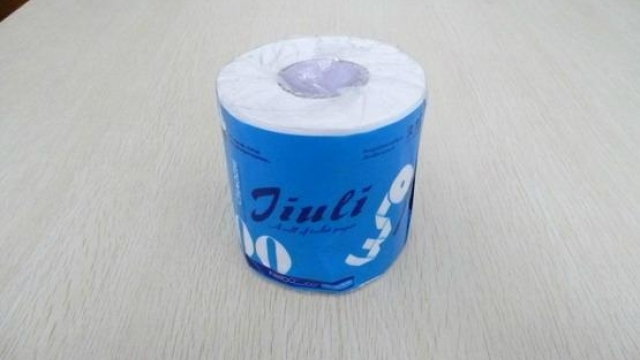The Unsung Hero of Hygiene: The Fascinating Journey of Toilet Paper Manufacturing
Toilet paper manufacturing may not be the most glamorous industry, but its significance in our everyday lives cannot be underestimated. We often take for granted the soft and fluffy rolls that come to our rescue in times of need, without giving much thought to the fascinating journey they take, from paper manufacturing to the shelves of our supermarkets. This essential product has evolved over time, revolutionizing the way we maintain hygiene and ensuring our comfort and convenience. Let’s embark on a journey into the world of toilet paper manufacturing to uncover the unsung hero behind our cleanliness and comfort.
At its core, toilet paper manufacturing is deeply rooted in the art and science of paper manufacturing. It all begins with the transformation of wood fibers into pulp, an intricate process that involves breaking down the wood and removing impurities. Once the pulp is ready, it goes through various steps of refinement, including bleaching and the addition of chemicals to improve its strength and flexibility. These carefully engineered fibers form the foundation of the soft and absorbent toilet paper we know and love.
But the journey doesn’t end there. The refined pulp is then transformed into large rolls of paper, creating the base material for toilet paper production. This is accomplished through a massive paper machine, a marvel of engineering that stretches over several football fields in length. Within this giant apparatus, the pulp is spread out evenly to create a thin and continuous sheet of paper. As it passes through the machine, the paper is pressed, dried, and strengthened, ensuring uniformity and quality.
Now that we have the paper, the final manufacturing stage begins. The large rolls are transported to smaller converting machines, where they are cut into the familiar individual toilet paper rolls we’re familiar with. This process involves precision cutting, embossing, and perforating the paper to enhance its functionality and tearability. Simultaneously, the iconic cardboard tubes are inserted, acting as the core structure of our toilet paper rolls.
As these finished rolls come off the production line, they go through rigorous quality control checks to meet the high standards expected. Any imperfect rolls are swiftly discarded to ensure that only the best reaches our homes. From here, the toilet paper undergoes packaging, where it is neatly wrapped, sealed, and prepared for distribution to retailers across the globe.
The fascinating journey of toilet paper manufacturing showcases the marriage of art and technology, blending the mastery of paper manufacturing techniques with the need for constant innovation to cater to our evolving needs. So, the next time you reach for a roll of toilet paper, take a moment to appreciate the extraordinary journey it has undertaken, from the hushed world of paper manufacturing to our humble bathrooms, quietly serving as our unsung hero of hygiene.
History of Toilet Paper Manufacturing
The journey of toilet paper manufacturing dates back centuries, weaving through various civilizations and evolving alongside the progress of papermaking techniques. While the exact origins may be vague, the concept of using paper for personal hygiene emerged in ancient China, during the early 2nd century BCE.
The first records mention the utilization of sheets made from soft paper materials, created specifically for cleansing purposes. These early prototypes were often reserved for the high ranks of Chinese imperial households. However, as papermaking methods advanced and production costs decreased, the availability of toilet paper slowly extended to other levels of society.
As time passed, toilet paper spread beyond the borders of China, reaching other parts of East Asia. Japan, for instance, began its own production in the 14th century and developed unique techniques, such as using discarded washi paper from manuscripts and books. Meanwhile, in the Western world, the concept of toilet paper as we know it today took longer to establish itself, with various alternatives like leaves, sticks, and even corn cobs being used in its place.
The mass production of toilet paper started gaining momentum during the early 19th century, thanks to technological advancements in papermaking machinery. The introduction of continuous papermaking techniques and the utilization of wood pulp revolutionized the industry, making toilet paper more affordable and widely available. This pivotal moment marked the start of toilet paper’s fascinating journey, leading to the booming manufacturing process we know today.
The Process of Toilet Paper Manufacturing
Toilet paper manufacturing is a fascinating journey that involves several carefully orchestrated steps. From raw materials to the finished product, let’s delve into the intriguing process behind the creation of this everyday essential.

Firstly, the manufacturing process begins with the selection of high-quality paper pulp. This pulp is typically derived from wood fibers obtained through sustainable forestry practices. The pulp is then thoroughly cleaned and bleached to ensure its purity, brightness, and hygiene standards.
Next, the cleaned pulp is mixed with water to create a slurry-like consistency. This slurry is then sprayed onto a large wire mesh conveyor belt, resulting in a thin, continuous layer of wet pulp. The excess water drains through the mesh, leaving the fibers tightly intertwined.
As the water continues to drain away, the damp web of interconnected fibers moves through a pressing phase. Giant rollers compress the fiber web, squeezing out any remaining water and compacting the pulp into a tight, uniform sheet. This pressing process also enhances the strength and softness of the toilet paper.
Following the pressing stage, the toilet paper sheet enters the drying section. Here, the sheet is heated and passed through a series of heated drums or cylinders. The heat evaporates the remaining moisture, leaving behind a dry and crisp sheet of toilet paper.
And there you have it—the process of toilet paper manufacturing summed up in a few paragraphs. From the careful selection of raw materials to the intricate pressing and drying stages, each step contributes to producing the soft, absorbent toilet paper we all rely on daily.
Innovations in Toilet Paper Manufacturing
Improved Processing Techniques
Manufacturers of toilet paper have constantly sought innovative ways to enhance processing techniques in order to improve the quality of the final product. One notable innovation is the use of Fourdrinier machines, which revolutionized the papermaking process during the early 19th century. These machines introduced continuous production, resulting in efficient and faster manufacturing. The use of advanced machinery has allowed for the production of toilet paper that is not only softer but also stronger and more absorbent.
Eco-Friendly Practices
In recent years, toilet paper manufacturers have made significant advancements in adopting eco-friendly practices. One key innovation is the use of recycled materials in the production process. By utilizing recycled paper fibers, manufacturers are contributing to waste reduction and promoting sustainability. Additionally, the development of biodegradable and septic-safe toilet paper has further tackled environmental concerns. These innovations align with the growing consumer demand for environmentally conscious products and demonstrate the commitment of manufacturers to reducing their ecological footprint.
Enhanced Embossing Techniques
Toilet paper has come a long way in terms of texture and comfort, thanks to the development of enhanced embossing techniques. Manufacturers have embraced advancements in technology to create intricate and visually appealing patterns on toilet paper. These embossing techniques not only enhance the aesthetic appeal of the product but also contribute to its functionality. By carefully configuring the embossing patterns, manufacturers are able to provide a toilet paper experience that is not only visually pleasing but also ensures optimal hygiene and cleanliness.
In conclusion, the world of toilet paper manufacturing has witnessed remarkable innovations over the years. Through improved processing techniques, eco-friendly practices, and enhanced embossing techniques, manufacturers have continually strived to deliver high-quality products that meet the evolving needs and preferences of consumers. These innovations highlight the dedication of the industry to enhance hygiene standards while also considering environmental sustainability.


